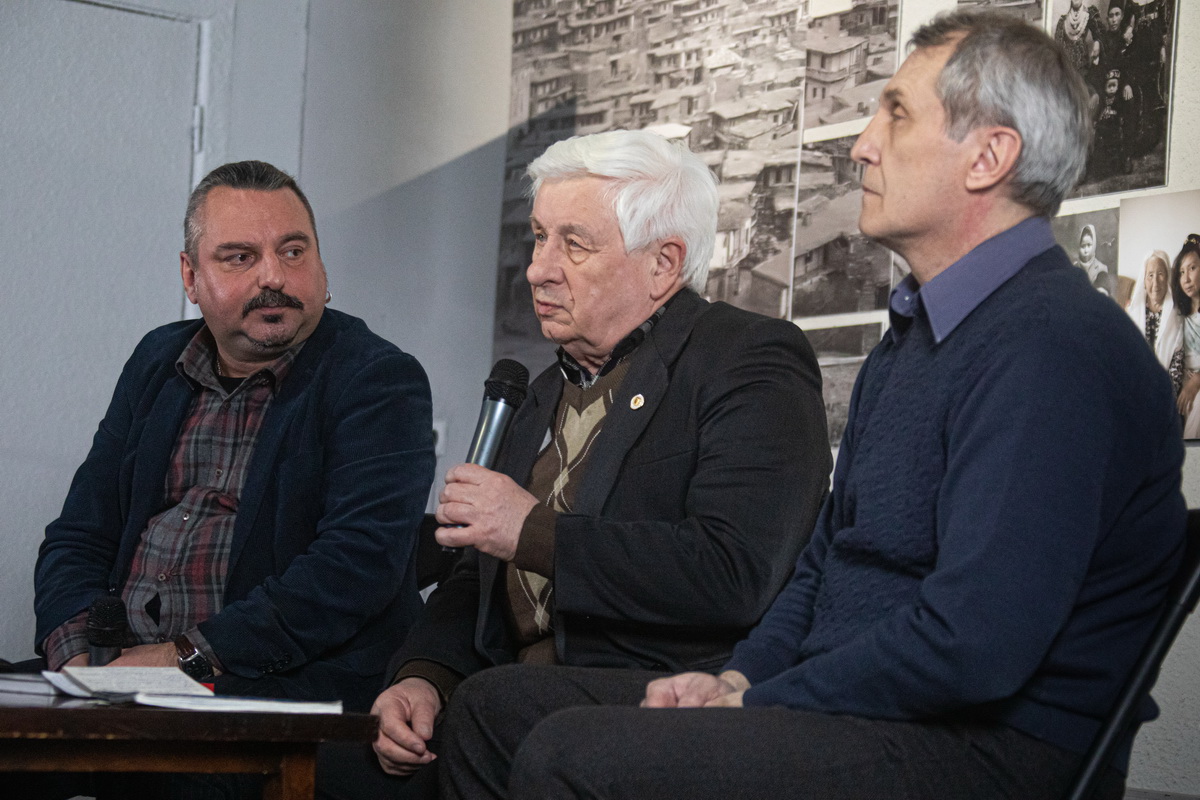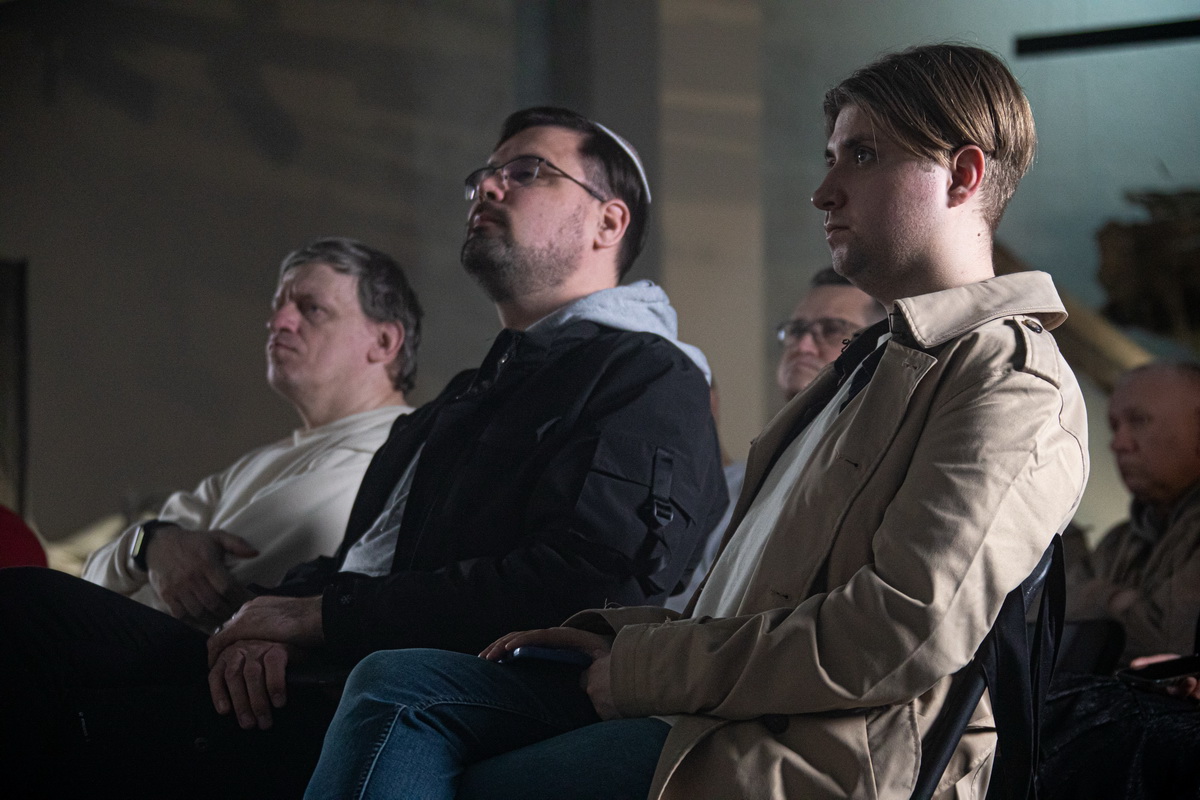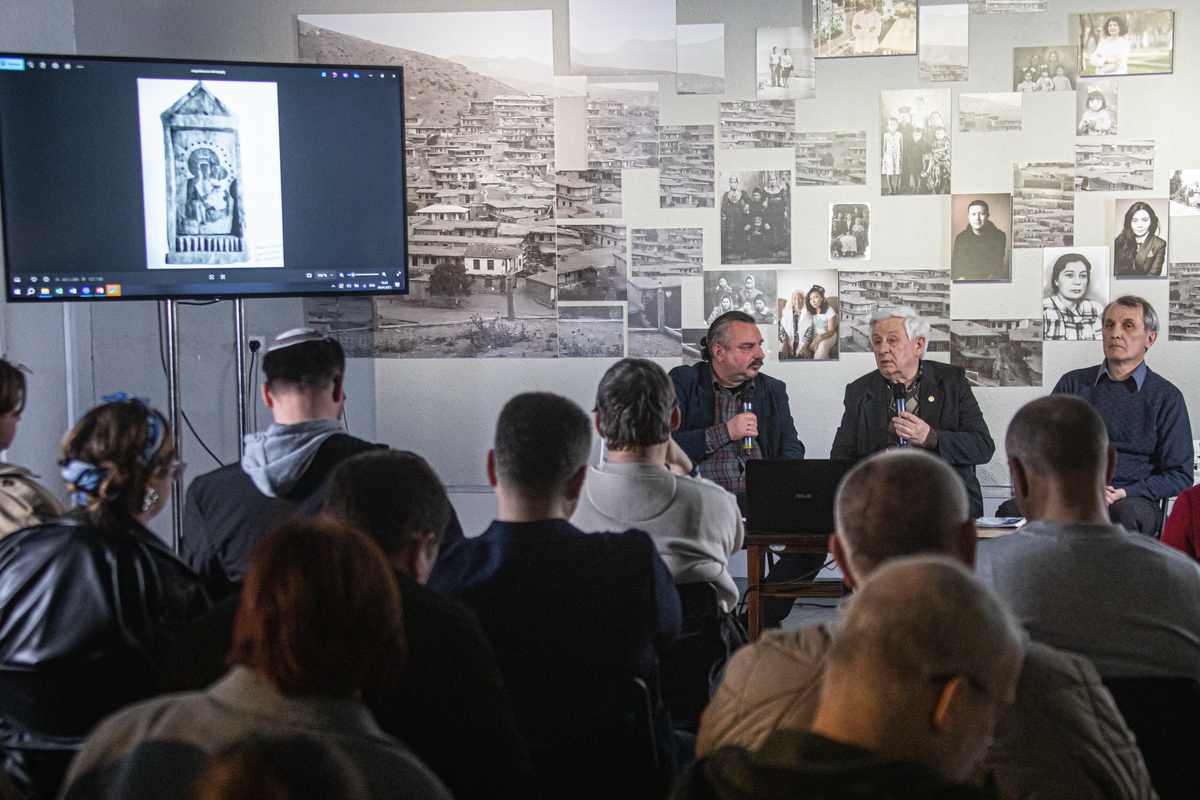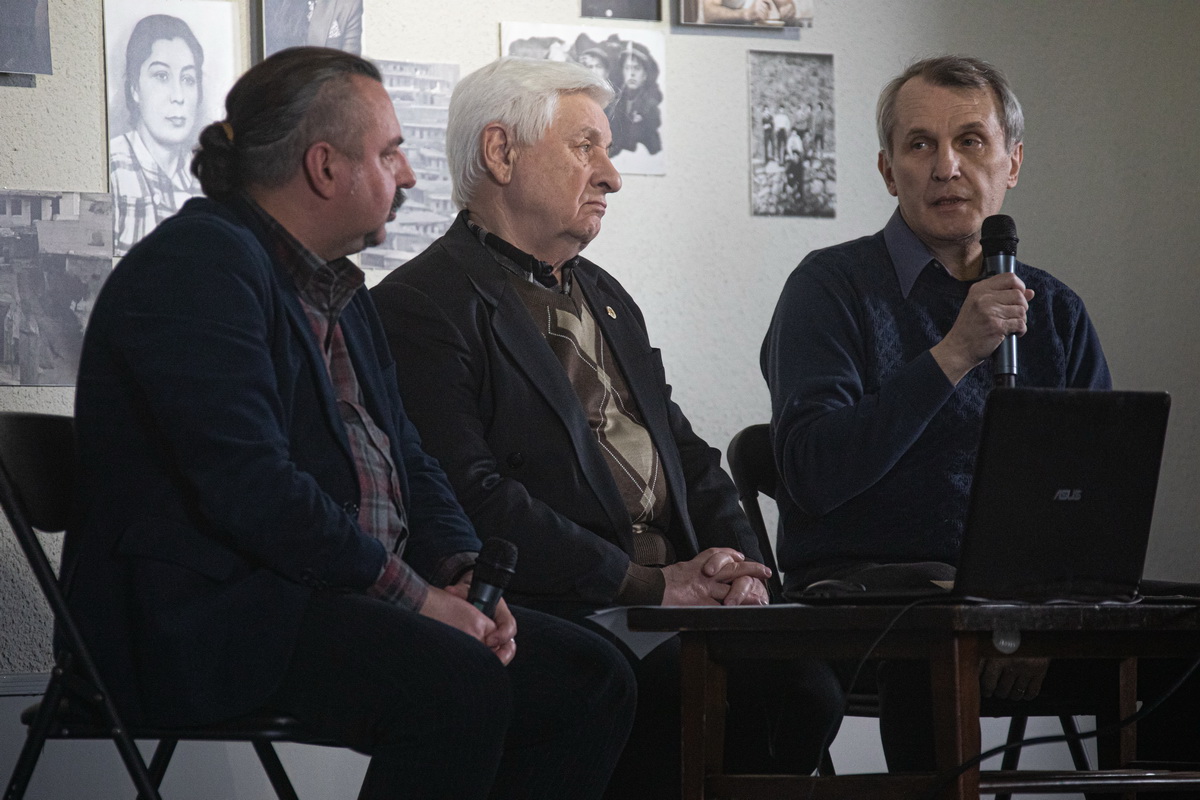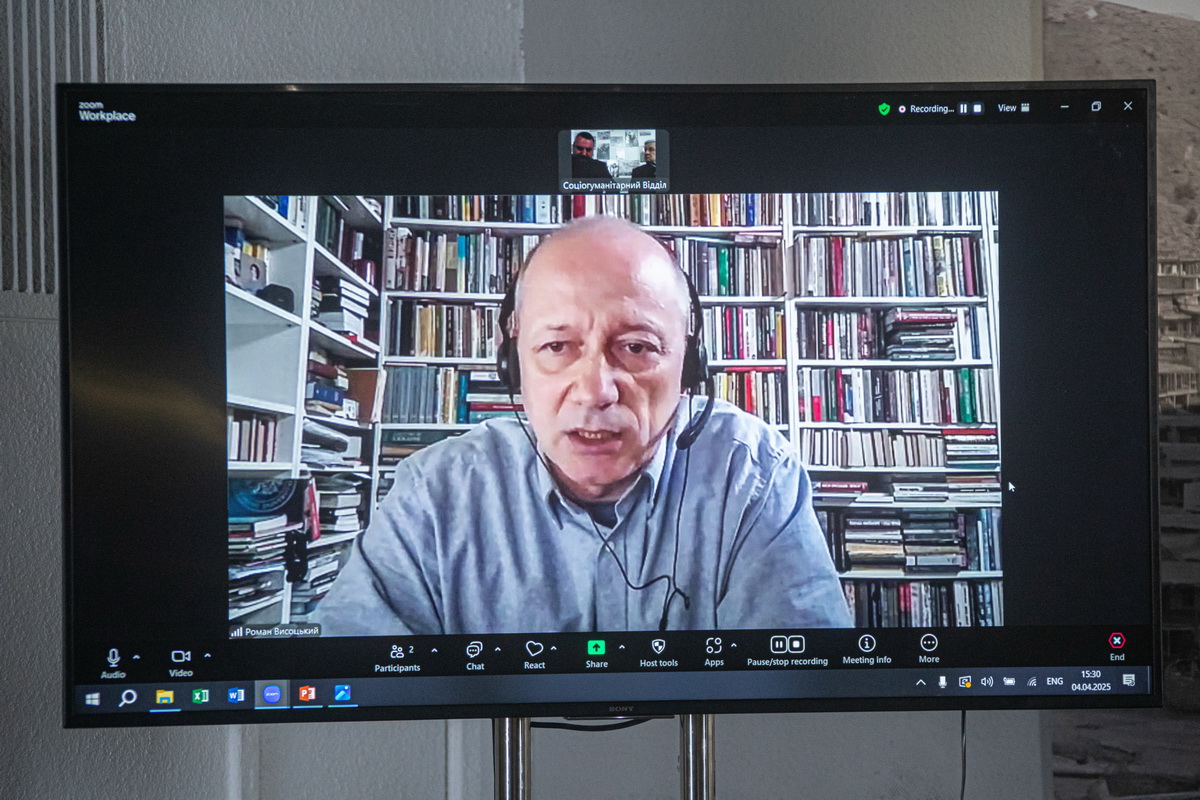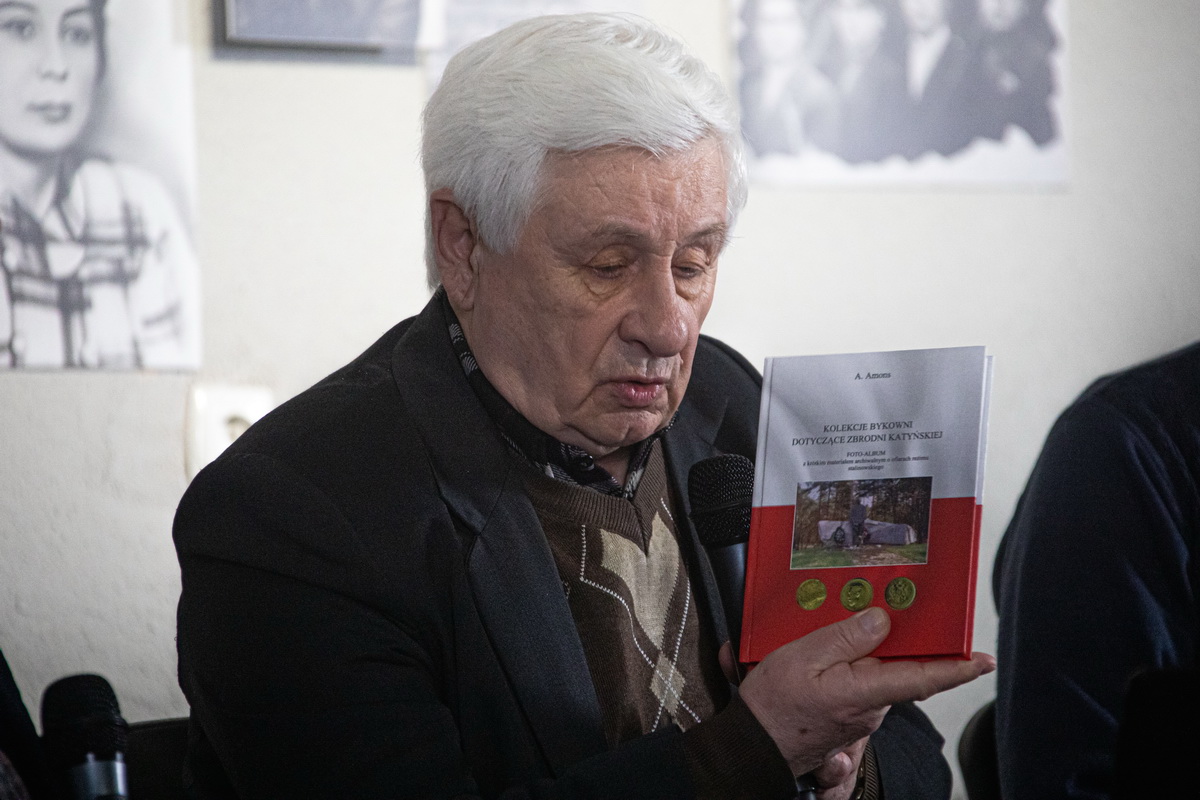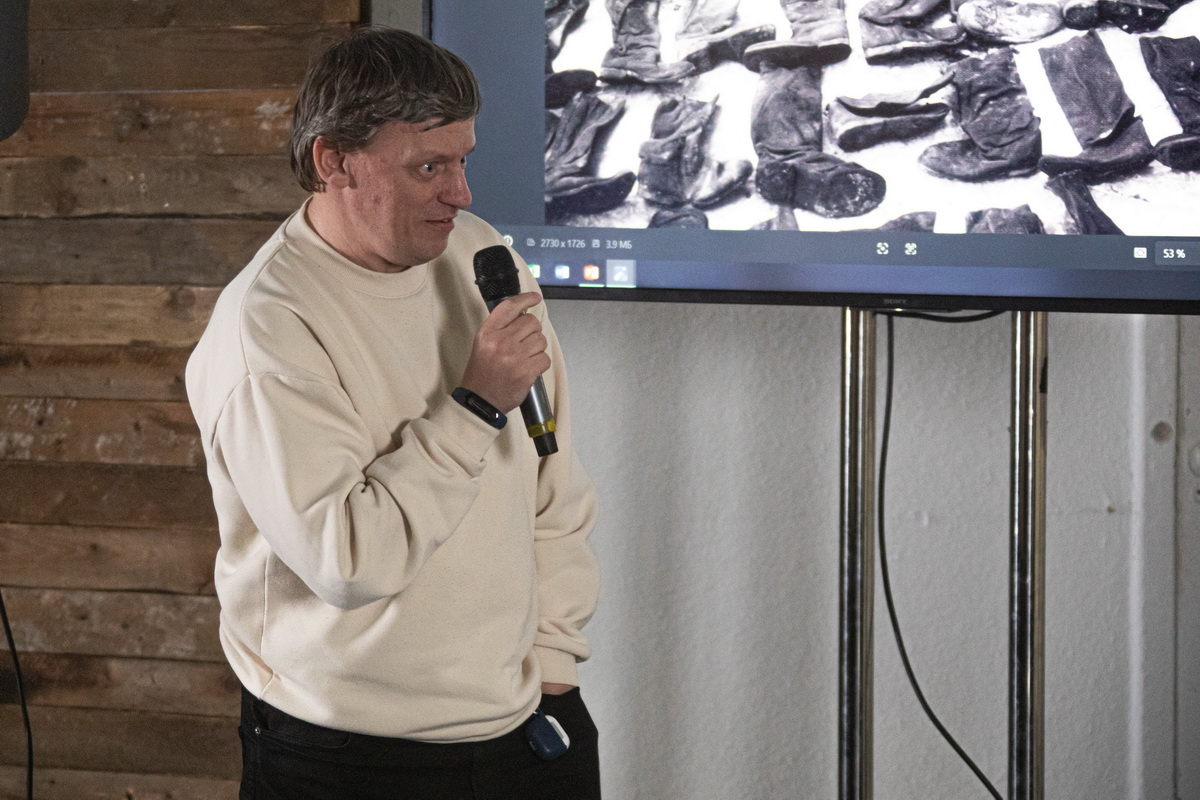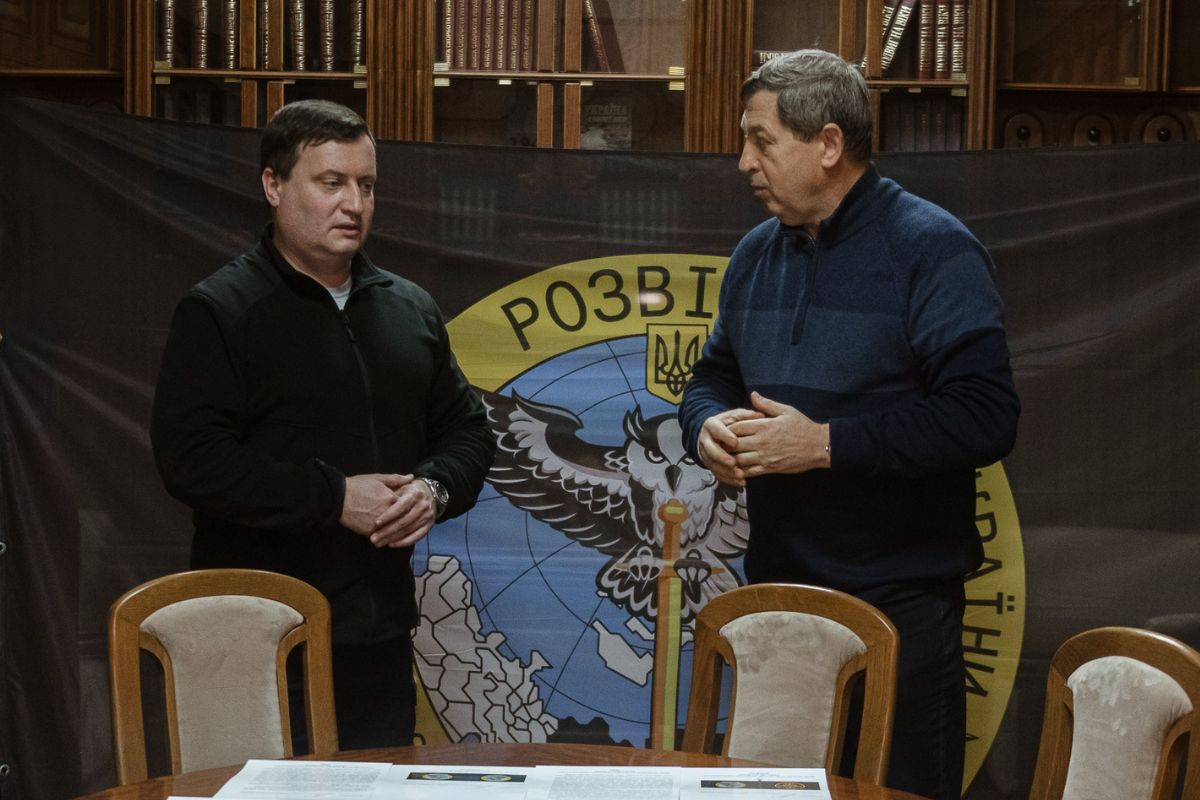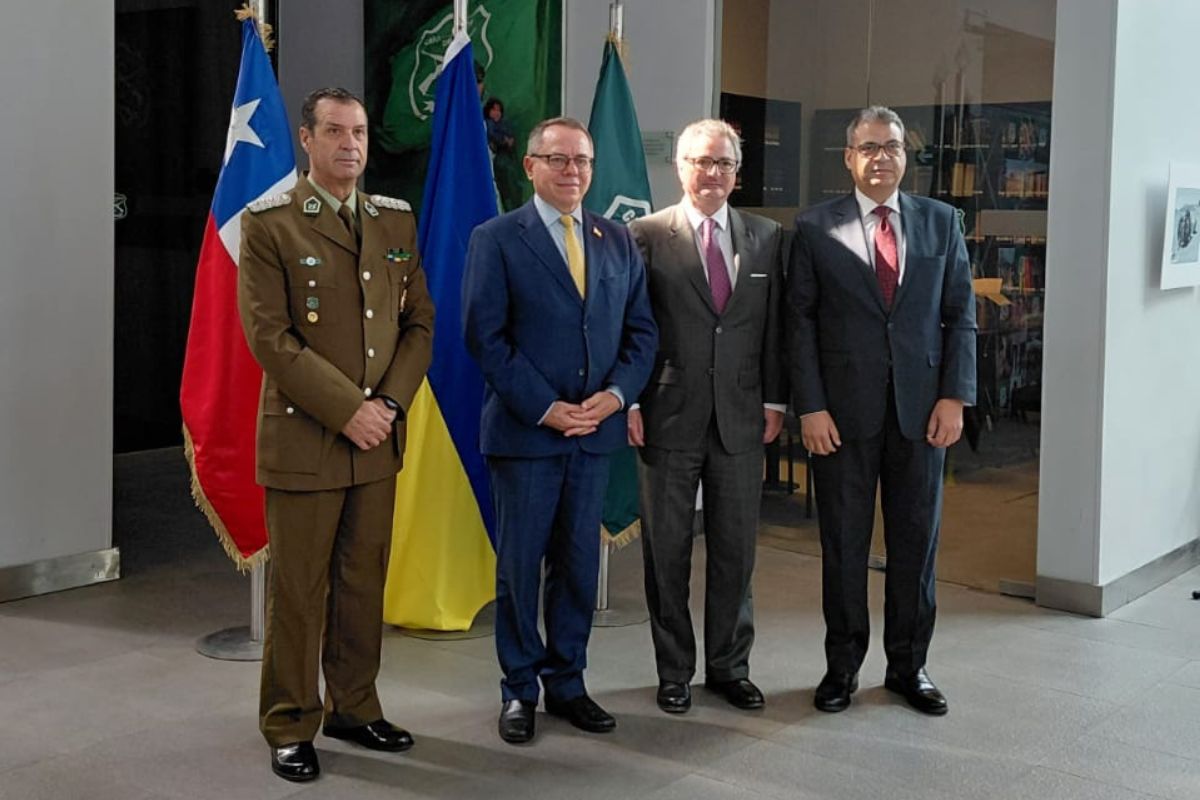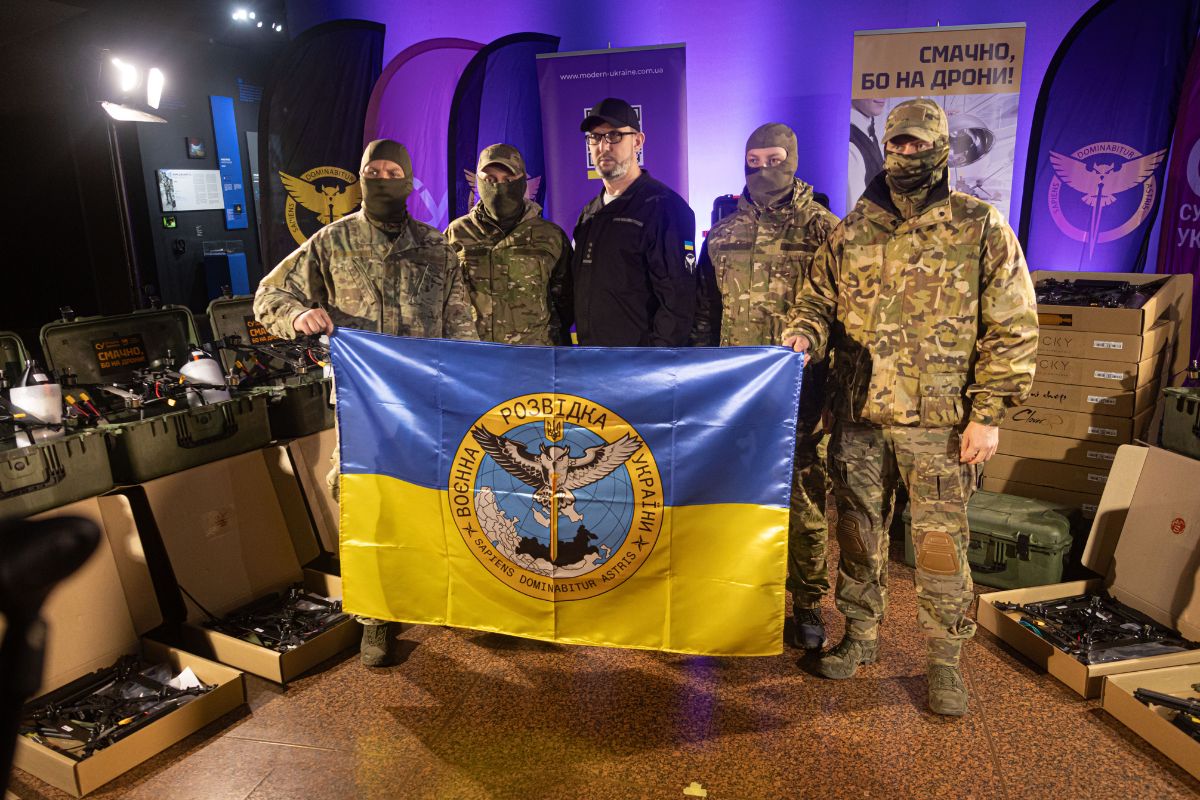On April 4, 2025, the War Museum hosted a public discussion, “Ukrainian traces of the Katyn Massacre,” dedicated to the 85th anniversary of the mass executions of Polish officers. The discussion participants were Valeriy Philimonikhin, Scientific Secretary of the Bykivnia Graves National Historical and Memorial Reserve, and Andriy Amons, a former military prosecutor and retired Colonel of Justice who investigated the Katyn Massacre in Ukraine. Roman Wysocki, Professor of the Institute of Contemporary History at Marie Curie-Skłodowska University in Lublin (Poland) joined us online from Poland. The event was moderated by Roman Kabachiy, the Acting Head of the Department of the War Actions in the 20th century World Wars.
At the beginning of the meeting, the participants watched a video by Andriy Rukkas, Associate Professor of the Department of Central and Eastern European History at the Taras Shevchenko National University of Kyiv, where he described the circumstances and course of mass executions of Polish prisoners in the USSR in 1940. According to the decision made by the Central Committee of the All-Union Communist Party (Bolsheviks) on March 5, 1940, from April 4 to mid-May 1940, Polish officers and other categories of prisoners from various camps were executed. Among them were camps in Starobilsk (prisoners buried in the hamlet of Piatykhatky north of Kharkiv), Kozelsk (prisoners shot and buried in the village of Katyn near Smolensk), Ostashkov (prisoners shot in Tver and buried in the town of Mednoye), as well as prisoners from prisons in western Ukraine and Belarus (shot in Kyiv and buried in Bykivnia, on its outskirts), Kharkiv, Kherson, and Minsk.
Andriy Amons spoke about the search work carried out in the 1990s in the village of Piatykhatky near Kharkiv and paid attention to the work of specialists in 2001-2012 in Bykivnia near Kyiv. Comparing the results of the researchers, he also emphasized the situation in russia and Belarus, where exhumations were suspended. He explained the data used to determine the identity of the buried. These could be identification tokens, inscriptions on personal items, such as toothbrushes, and signatures on photos.
Answering a question about the complexity of the logistical processes that the Bolsheviks developed for the transfer and execution of prisoners, Andriy Amons emphasized that this was primarily to conceal an unprecedented apparent war crime.
Valeriy Philimonikhin noted that, to date, only about 10% of the area of the necropolis in the Bykivnia forest has been thoroughly investigated, where victims of various “national operations” of the NKVD are also buried, including Poles. According to him, the total number of victims buried near Kyiv of approximately 100 thousand people may be quite likely.
He also emphasized that there were many Ukrainians on the Katyn lists. Among the Polish victims of the Soviet regime were not only members of the Polish army but also civilians who were persecuted for social or political reasons.
In the conversation with Professor Roman Wysocki, the topic of the murdered chaplains of the Polish Army was raised. In addition to the Roman Catholic priests, there were three Orthodox chaplains among them—the Chief Orthodox chaplain, Colonel Szymon Fedorońko, Lieutenant Colonel Viktor Romanowski, and Major Volodymyr Ochab, who were canonized as saints by the Polish Autocephalous Orthodox Church on March 18, 2025, and a Greek Catholic priest, Lieutenant Colonel Mykola Ilkiv (posthumously).
The Katyn Massacre serves as a notable example of the operations of a totalitarian communist regime. In light of the current glorification of Stalinism in authoritarian russia and Belarus, it is increasingly important to emphasize the truth about the war crimes committed during World War II.
